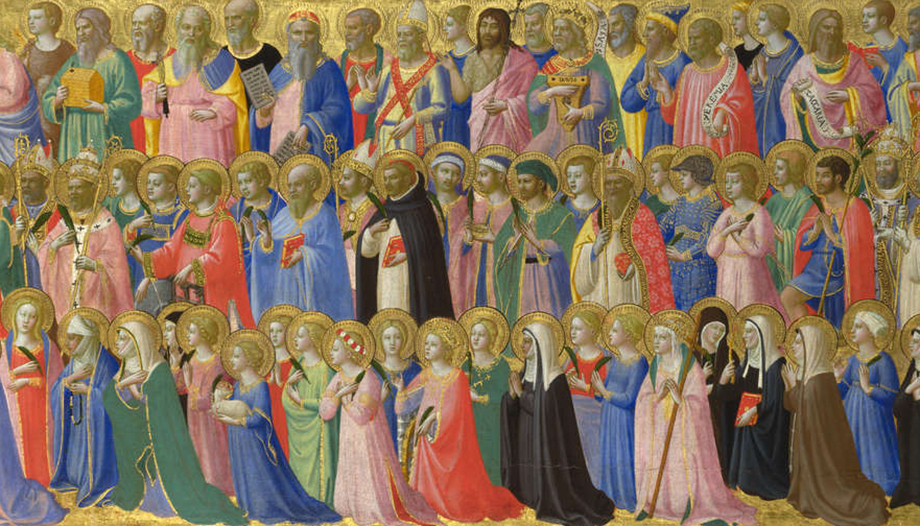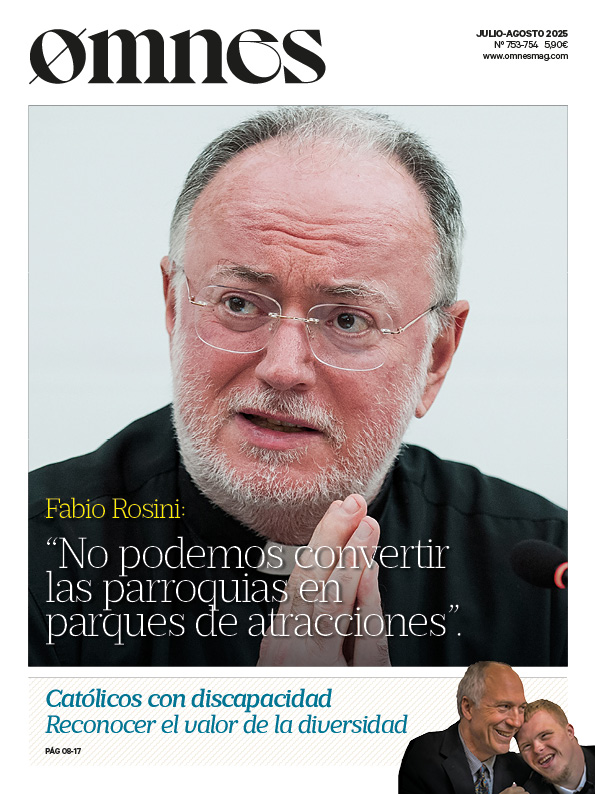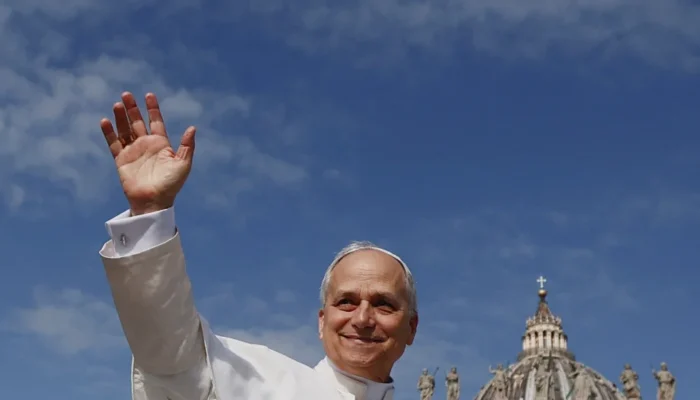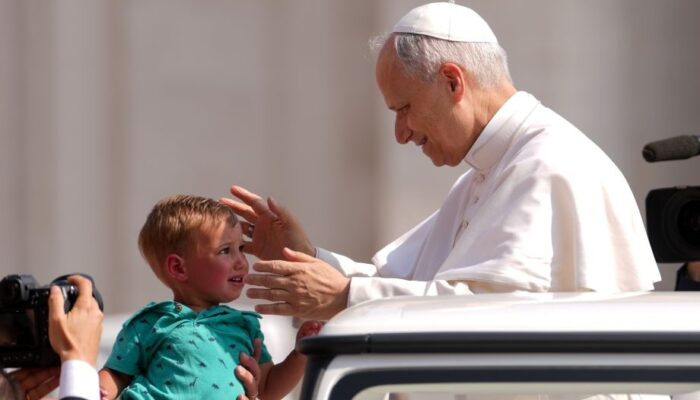Translation of the article into Italian
The Holy Father will declare this Sunday in St. Peter's Square in Rome ten new saints, among them the first from Uruguay, the Italian-Uruguayan nun Maria Francesca di Gesù, born Anna Maria Rubatto (1844-1904), who spent part of her life in South America, died in Montevideo, and was the foundress of the Tertiary Capuchin Sisters of Loano.
Numerous faithful from different countries will attend the ceremony, which will also canonize the French diocesan priest Charles de Foucauld (1858-1916), "poor among the poor", and the Dutch Carmelite journalist Tito Brandsma, executed in the Nazi extermination camp of Dachau in 1942, and Lazarus, an Indian martyr of the 18th century, killed out of hatred for the faith.
As reported by Omnes, a group of journalists has asked Pope Francis to name the Dutch Carmelite the patron saint of journalists along with St. Francis de Sales. For them, Brandsma embodied the values of peace journalism understood as a service to all people.
Among the new saints are also other Marys. Marie Rivier, foundress of the Congregation of the Sisters of the Presentation of Mary; Marie de Jesus (née Caroline Santocanale), foundress of the Congregation of the Capuchin Sisters of the Immaculate Conception of Lourdes; and Maria Domenica Mantovanico-founder and first Superior General of the Institute of the Little Sisters of the Holy Family.
"The saints are our brothers and sisters who welcomed the light of God in their hearts and transmitted it to the world, each according to his or her own tone," said Cardinal Marcello Semeraro, prefect of the Congregation for the Causes of Saints, in outlining a profile of the three blessed who were added to the previous seven scheduled for canonization. About Titus Brandsma, for example, he noted that he died a martyr in the Dachau concentration camp, "after having studied Nazi ideology in depth, glimpsing its dangers and criticizing its anti-human approach," Cardinal Semeraro stressed.
Fourth centenary of a great canonization
On March 12, 1622, 400 years ago, Pope Gregory XV solemnly canonized five saints who, with the passage of time, would be recognized as great figures in the history of the Church: St. Philip Neri, St. Teresa of Jesus, St. Ignatius of Loyola, St. Francis Xavier and St. Isidore Labrador.
"The news spread among the Italians, perhaps moved by a certain envy, that on that day the Pope had canonized four Spaniards and a saint. What is certain is that, of the five new saints, four were relatively contemporary, while the cult of St. Isidore had been going on for centuries," he has written in Omnes Alberto Fernández Sánchez, Episcopal Delegate for the Causes of Saints of the Archdiocese of Madrid.
In fact, "this year 2022 marks the fourth centenary of this great event for the Church, and also the 850th anniversary of the popular devotion to St. Isidore Labrador since his death, which according to the sources took place in the year 1172," adds the episcopal delegate.
To celebrate this anniversary, the Holy See has granted the Archdiocese of Madrid a Jubilee Year of San Isidro, which will last from today, May 15, until the same day next year".
"In a society so in need of models of family life, St. Isidore, together with his wife, St. Maria de la Cabeza, and his son, Illán, are given to us as a concrete example of a family that lives in mutual love. In a society so in need of encouragement and example for workers, the saintly farmer is given to us as a model of work trusting in the providence of God the Father", wrote Alberto Fernandez.
Jalones de la Ruta de san Isidro
The Jubilee route is a way to get to know St. Isidore better by visiting places where he lived, together with his wife Santa María de la Cabeza and his son Illán, and to reflect on significant aspects. It is also an opportunity to gain the grace of the Jubilee.
During the Holy Year, the Archdiocese of Madrid will host numerous religious and cultural celebrations. Those who approach the tomb of the Saint, in the Royal Collegiate Church of San Isidro, will be able to obtain a plenary indulgence, which is the remission before God of the temporal punishment for sins.
To do so, they must have an interior disposition, pray the Creed, pray for the Pope's intentions, go to the sacrament of Penance (about 15-20 days before or 15-20 days after), and receive communion at a Eucharist close to the date of the visit, as reported by the Archdiocese of Madrid through various media.
The Jubilee Route of St. Isidore consists of six stages: 1) Chapel of the Nativity; 2) parish of St. Andrew, where St. Isidore was baptized and lived his faith; 3) museum of St. Isidore, which was once the home of Ivan de Vargas, for whom the saint worked; 4) Collegiate Church of San Isidro, which was a provisional cathedral when the diocese of Madrid-Alcalá was created in 1885, a category it lost in 1992 when the cathedral of La Almudena was consecrated; 5) Hermitage of San Isidro, located in La Pradera; and 6) Hermitage of Santa María la Antigua, where tradition places two of the miracles attributed to San Isidro.
The beatifications, an example of synodality
"Holiness in the life of the Church is felt in the sentiments of the faithful people of God," writes Alberto Fernandez. "The processes of beatification and canonization are perhaps one of the ecclesial events where the 'sensus fidelium' comes most into play, the synodality of which so much is said today, since in them the Church listens to the voice of the faithful people who, spontaneously, moved internally by the Spirit, ask for solemn recognition of what the faithful already know with certainty: that this person has lived and died a holy life, fulfilling the will of God, and can be held as a model and intercessor before the Father."
In the case of St. Isidore, only a century after his death, "the codex of John Deacon gathered all this fame of sanctity of the saintly farmer from Madrid, his abandonment to the will of God, his love for the poor and needy, his trusting prayer, his work lived under the provident gaze of the Father", adds the episcopal delegate from Madrid.
In this way, "what the Christians of Madrid transmitted to one another was put in writing in this codex, and centuries later, as we have said, on March 12, 1622, it was solemnly recognized by the papal magisterium. His cult spread rapidly throughout the Church, and it is not uncommon to find chapels and hermitages dedicated to this saint, who was also named patron saint of Spanish farmers by Pope John XXIII in 1960".
"San Isidro was not a superman".
In Madrid the relic of the sacred incorrupt body of Saint Isidro Labrador is kept and venerated, which has been preserved uninterruptedly since his death, and which, beyond the miracles of which he has been the protagonist, is another example of the devotion that the people of Madrid, with the kings and authorities at the head, have paid to this great saint," said Alberto Fernandez.
Monsignor Juan Antonio Martínez Camino, auxiliary bishop of Madrid, stated, precisely in the act closing speech of a day organized by the Angel Herrera Oria Cultural Foundation on the occasion of the fourth centenary of the canonizations of March 12, 1622, that "we cannot know the face of God if we do not know the saints".
"In our pattern we can see clearly what sometimes we do not see. We often believe that the saints are supermen, that they were born perfect. But let us look at them in their truth: they are men like us. The only difference is that they knew how to accept the love of God and dedicated their lives to giving that love to others," wrote Cardinal Carlos Osoro, Archbishop of Madrid, in a letter that you can consult here. here.








